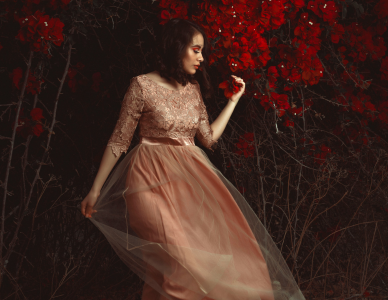Para-Romantasy: Vertical Guide


Para-Romantasy is our vertical for Paranormal Romance and Fantasy Romance stories. These stories are romances set in paranormal or fantasy worlds, that feature magic and worldbuilding as part of the romantic storyline.
In the above video, Wattpad Content Expert Ronan walks you through the ins and outs of the expansive Pararomantasy vertical. While these stories often blend traditional fantasy and paranomal elements, they should be used to support the romance at the center of the story. If you want to learn about writing monsters and their hunters, vampires, and mythical realms, this is the vertical for you!
Components of Para-Romantasy
Para-Romantasy encompasses a number of subgenres, but all of those subgenres have common elements. These are the components that form the core of what the Para-Romantasy reader is looking for in a story.
Magic
Magic and fantasy elements that contribute to the romance. Para-Romantasy readers are looking for magic and for an experience outside of their ordinary lives. They come to the genre for that escapist fantasy of cool magic and worldbuilding. Note that the worldbuilding should support the romance. The point of the story is the romance. The magic should ideally contribute to the romance, either as something that draws the characters together, or something that keeps them apart–or both. Para-Romantasy stories are not generally interested in the political implications of magic or worldbuilding, except as fuel for the romantic conflict.
External conflict
High stakes drama based in the fantasy elements that shape the relationship. Para-Romantasy stories work best when there are big stakes attached to the stories. These are the kinds of stakes we can’t get in everyday life: the fate of kingdoms or worlds. There are usually life or death stakes for the main characters. This is not a cosy coffee shop that happens to be set in a magical world, it’s a magical world with big conflicts happening. However, those conflicts are all set dressing for the main thrust of the story, which is the romantic relationship. This is similar to the Dangerous Love vertical, where mafia wars and underground fighting rings provide the stakes and context for the romance.
Power dynamics
One of the characters should be more powerful than the other. Whether that’s more physically or magically powerful, with one character being a creature or magic user and the other being a regular human, or more socially powerful due to being a prince or princess, there should be some kind of power differential between the leads that adds spice to the romance.
Subgenres
Para-Romantasy is a broad Vertical that includes a number of subgenres. This is not an exhaustive list, but these are the subgenres we see most frequently.
Paranormal Romance
Romance set in our contemporary world, with magic elements or creatures. This subgenre is defined by its worldbuilding and the fact that the story is set in our contemporary world with the addition of a secret world of magic. Usually, one protagonist is a normal human who is sucked into the secret paranormal world, and the love interest is a dangerous person who inhabits that world.
Creature Romance
Romance where one of the leads is a paranormal creature (dragon, alien, orc, vampire, demon, etc). Creature romance can overlap with other Para-Romantasy genres. The defining feature of this subgenre is that one of the romantic leads is a fantasy creature of some kind, and the other is human. The monster must either be humanoid in appearance (even if they have horns, fangs, wings) or be able to shift into a human form, and they must have human thoughts and emotions.
Adventure Fantasy Romance
These romances are set in a fully separate secondary world separate from our own, and are structured around a central quest or adventure that provides the context for the leads to fall in love. The leads have to get or do or achieve some external plot goal that requires them to work together, and over the course of their adventures, they fall in love.
Court fantasy romance
Romance set in a court where intrigue and drama are the main conflicts. Like adventure romance, these stories are usually set in a secondary world separate from our own. The main plot conflict in these kinds of stories is court intrigue and politics as the characters try to navigate shifting loyalties and conflicts.
Balance of romance and fantasy
Para-Romantasy stories are first and foremost romances. While these stories should involve magic and other fantasy worldbuilding, the focus and attention of the story should remain on the development of the romantic relationship between the two main characters, not on the fantasy plot. The magic elements of Para-Romantasy serve to set the stage for the romance and raise the stakes on the relationship, but the story should not focus on those plot elements.
For example, in Game of Thrones, the story is very interested in the question of who is going to sit on the Iron Throne. That is what the story is about. But in a Para-Romantasy story, we’d only be interested in that question insofar as it means something to one of the two main characters and their developing relationship. The political fortunes of the kingdom are only interesting insofar as they relate to the romance. Whereas in Cinderella, we’re only really interested in the prince being forced to marry because it sets up the ball where he meets Cinderella. The political question of succession in the kingdom is not really the story’s main question, it just provides some pretext for the romance.
Here are some tips to help balance your romance and fantasy elements:
- Most scenes should focus on the relationship between the two leads. The bulk of the narrative focus and time should be on their interactions and developing relationship. The story should still have strong external goals and conflicts and the scenes should move the plot forward, but not at the expense of the romance.
- Keep your point of views restricted to either one or both of the main characters. You can have secondary characters, but they should not have narrative points of view in the book. We are most interested in the thoughts, experiences, and emotions of the romantic leads.
- Keep subplots minimal. Subplots should support and tie back to the main plot and the romance, they should not exist for their own purposes. Subplots can be handy in developing a longer-running story engine, but these subplots should still tie back to the main relationship in some way.



















